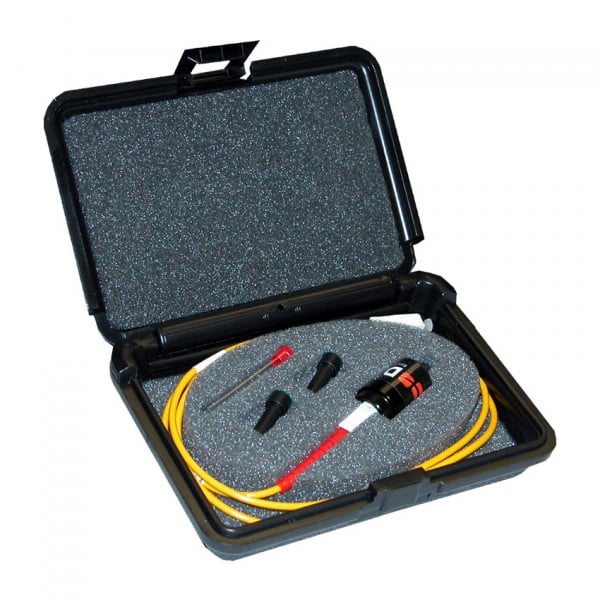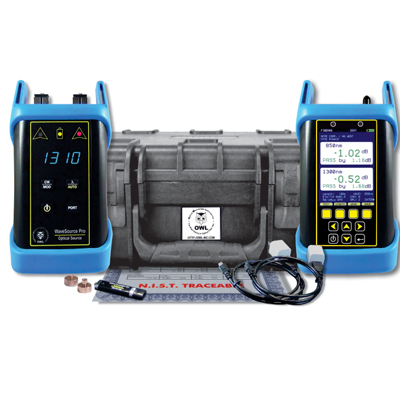Maximize your production yield with high-precision optical measurement system
A Comprehensive Guide to Optical Measurement System for Fiber Evaluation
When it comes to fiber analysis, recognizing optical dimension systems is crucial for evaluating performance and making sure quality. You'll check out crucial techniques like interferometry and spectroscopy, which assist you determine vital specifications. There's even more to it than simply these approaches; mastering attenuation measurement methods can substantially influence your network's performance. As you browse through this guide, you'll uncover insights that could transform your technique to optical fiber.
Comprehending Optical Measurement Solutions
When you check out optical dimension systems, you'll find they're important for evaluating fibers with precision. These systems utilize light to evaluate various qualities of fibers, including size, refractive index, and harmony. By using methods like interferometry and spectroscopy, you can obtain beneficial understandings right into the fiber's properties.You'll discover that these systems are made to minimize mistakes and improve accuracy, guaranteeing reputable data for your analysis. Various arrangements, such as single-mode and multi-mode systems, provide to certain fiber types, permitting you to pick the very best fit for your needs.Moreover, the assimilation of innovative software program tools helps you analyze the data efficiently, making it less complicated to determine any type of disparities or defects. As you explore deeper right into these dimension systems, you'll appreciate just how they improve the analytical procedure and improve the total high quality of fiber manufacturing and testing.
Trick Criteria for Fiber Analysis
Trick parameters for fiber evaluation play a necessary role in establishing the high quality and efficiency of optical fibers. When you review a fiber, you'll intend to concentrate on characteristics such as depletion, data transfer, and modal diffusion. Attenuation gauges the loss of signal strength as light trips through the fiber. A reduced depletion value shows much better high quality and longer transmission distances - optical fibre diameter analyzer.Bandwidth refers to the data-carrying capability of the fiber and is essential for high-speed communication. You'll need to analyze the bandwidth to ensure it fulfills your application requirements. Modal dispersion, which emerges from the different speeds at which light trips through different settings in multimode fibers, influences signal clarity
Methods for Depletion Measurement

Transmission capacity and Its Influence on Performance
Understanding transmission capacity is necessary for maximizing fiber performance, as it straight influences the amount of information that can be transferred over a network. Greater data transfer means you can send out even more info concurrently, permitting for faster communication and far better overall performance. When you're dealing with fiber optics, it's crucial to take into consideration how data transfer engages with fiber attributes, such as core size and material properties.If the transmission capacity is limited, you may experience data loss or slower rates, impacting your applications. Furthermore, various kinds of fibers can support differing transmission capacity levels, so it is necessary to select the right fiber for your particular needs.You must additionally remember that environmental aspects, like temperature level and outside disturbance, can influence bandwidth. By comprehending these elements, you can make enlightened choices to enhance your fiber optic systems, making certain reputable and reliable information transmission.
Refractive Index Measurement Approaches
Overall Internal Representation
Overall interior representation (TIR) acts as a fundamental concept for determining the refractive index of fibers. When light travels from a denser medium to a much less thick one, it can just be fully mirrored if the angle of incidence goes beyond a certain threshold, called the vital angle. This phenomenon enables you to identify the refractive index by assessing the angles at which index light shows or refracts. By utilizing a configuration that routes light right into a fiber and determines the resulting angles, you can calculate the refractive index precisely. Recognizing TIR not only boosts your fiber analysis however also boosts the style and efficiency of optical systems. So, leveraging TIR can result in extra efficient fiber-based applications.
Interferometric Strategies
Building on the principles of overall inner reflection, interferometric techniques give a powerful means for measuring the refractive index of fibers with high precision. These techniques manipulate the disturbance patterns developed when beams split and recombine after traveling different paths. You can utilize configurations like the Michelson or Mach-Zehnder interferometer to assess stage changes brought on by adjustments in refractive index. By carefully calibrating your system and assessing the resulting edges, you can establish the refractive index with remarkable precision. It's essential to maintain stable ecological problems to decrease mistakes. With these strategies, you'll boost your understanding of fiber residential or commercial properties, resulting in better performance in various applications, from telecoms to sensing unit innovation.
Modal Dispersion and Its Importance
Modal dispersion describes the dispersing of light pulses as they travel through a fiber, which can affect the general performance of the system. You'll see that this sensation can bring about indicate distortion, impacting data transmission prices and top quality. Recognizing its relevance is necessary for enhancing fiber optic designs.
Interpretation of Modal Diffusion
In optical fiber interactions, modal diffusion plays a considerable duty in establishing signal top quality and transmission speed. It occurs when various light modes take a trip at varying his explanation rates through the fiber. Given that each setting has distinct courses and qualities, they can come to the obtaining end at different times. This moment difference can bring about indicate spreading and distortion, which can break down the overall efficiency of the communication system. You could experience modal diffusion largely in multimode fibers, where the numerous paths of light worsen the issue. Recognizing modal dispersion is necessary for optimizing fiber layouts and ensuring that your interaction systems operate successfully, preserving the honesty of the transmitted signals over longer distances.
Impacts on Fiber Efficiency
Understanding modal diffusion aids highlight its results on fiber performance. This phenomenon occurs when various modes of light travel at varying rates within the fiber, causing signify dispersing gradually. As you analyze optical fibers, you'll see that enhanced modal dispersion can considerably break down signal quality, resulting in minimized transmission capacity and longer transmission distances. In useful terms, this indicates your information can get here distorted or delayed, affecting general interaction performance. To mitigate these effects, you may take into consideration making use of single-mode fibers, which minimize modal dispersion. By selecting the ideal fiber kind and recognizing just how modal diffusion affects performance, you can enhance transmission quality and guarantee trustworthy information transfer in your optical dimension systems.
Devices and Technologies for Optical Measurements
When it concerns optical measurements, several ingenious tools and technologies are at your disposal to enhance fiber analysis. You'll find fiber optic testers, which evaluate signal high quality and performance, important for preserving optimal network effectiveness. Optical time-domain reflectometers (OTDRs) are vital for finding faults and measuring loss over ranges, giving Our site thorough understandings into fiber integrity. Additionally, spectrometers can analyze light ranges, aiding you determine material buildings and composition.Don' t ignore the value of imaging systems, like digital microscopes, that allow you to visually inspect fiber surface areas for problems. Likewise, consider making use of polarization analyzers to gauge anxiety and strain in fibers, which is essential for recognizing their habits under various conditions. By leveraging these tools and innovations, you can greatly enhance your fiber analysis procedures, making certain integrity and high performance in your optical networks.
Often Asked Concerns
What Are the Expenses Related To Optical Measurement Equipments?
The costs associated with optical measurement systems can vary greatly. You'll need to evaluate equipment rates, maintenance fees, software program licenses, and possible training costs. Budgeting thoroughly will aid you prevent unanticipated economic difficulties down the line.

How Typically Should Fiber Evaluation Be Executed?
You should perform fiber analysis regularly, generally every 6 months or after substantial modifications in the environment (fiber measurement). This ensures excellent performance and helps determine possible concerns prior to they affect your system's effectiveness and dependability
Can Optical Measurement Systems Be Calibrated at Home?
Yes, you can calibrate optical measurement systems at home, yet it needs precision. Make sure you adhere to the supplier's standards, utilize suitable calibration standards, and ascertain your outcomes to guarantee precision in your measurements.
What Industries Commonly Make Use Of Optical Measurement Solutions?
You'll find optical measurement systems extensively utilized in industries such as telecommunications, production, health care, and research. They're crucial for quality assurance, fiber analysis, and ensuring exact measurements in numerous applications, improving performance and accuracy throughout markets.
Are There Any Type Of Security Concerns With Optical Measurement Solutions?
Yes, there are security interest in optical dimension systems. You should constantly wear protective eyewear to secure your eyes from intense source of lights and guarantee appropriate training to take care of devices securely and avoid mishaps.